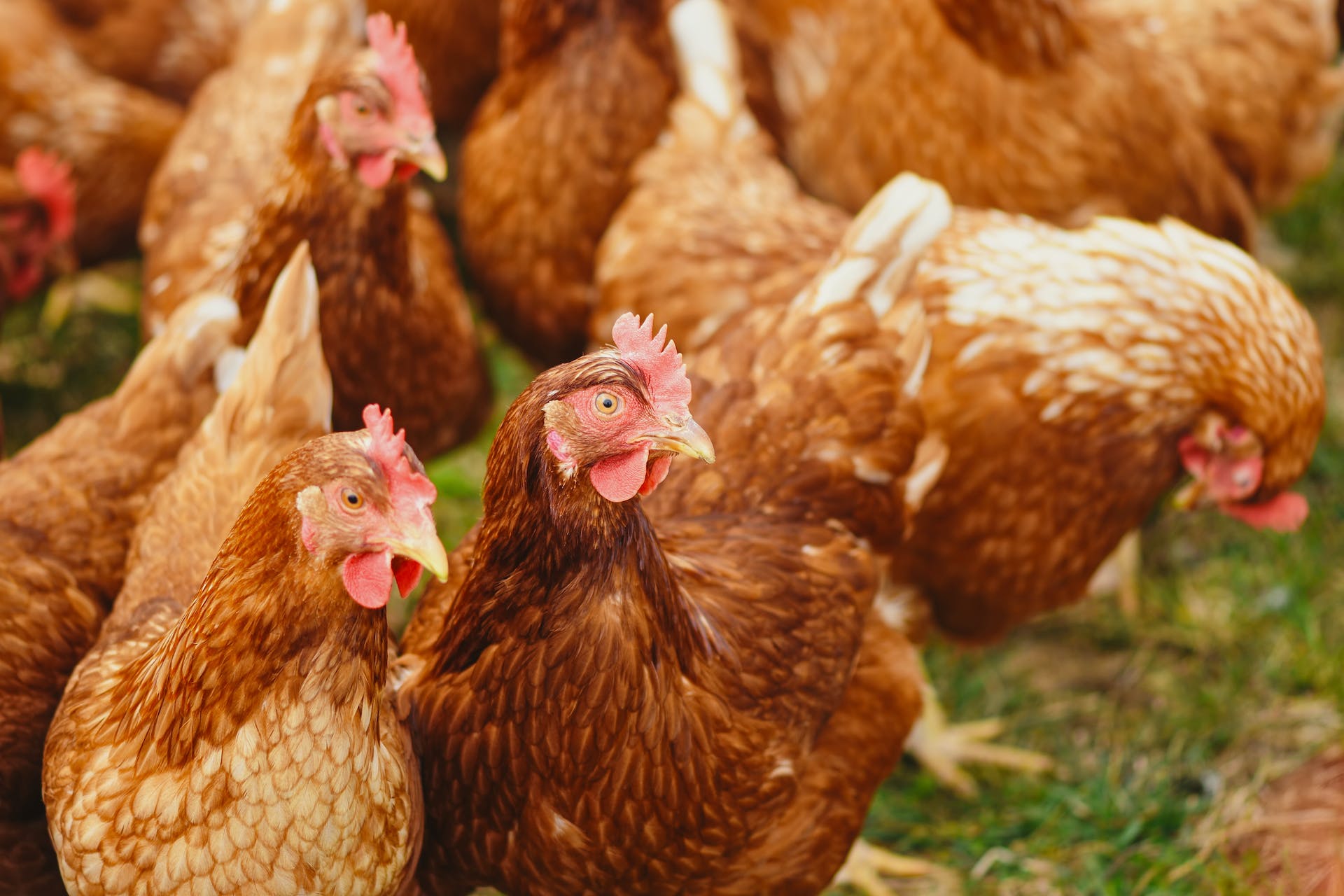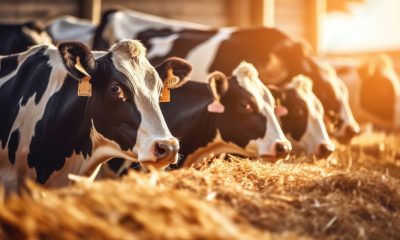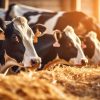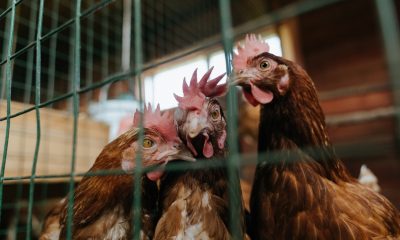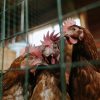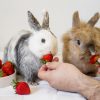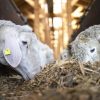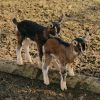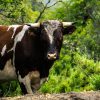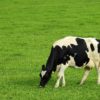Culture
Internet of Things(IoT) Sensors in Poultry Farming: Real-Time Monitoring and Analysis
Introduction:
Technological breakthroughs in the ever-changing field of agriculture have transformed traditional methods of farming. One such breakthrough is the integration of Internet of Things (IoT) sensors in poultry farming. This technological symphony not only offers farmers a real-time lens into their operations but also underscores the strategic importance of precision, efficiency, and sustainable practices.
IoT Sensors in Poultry Farming
In the ever-evolving landscape of agriculture, a technological revolution is quietly unfolding, and at its heart lies the transformative power of Internet of Things (IoT) sensors. These small but mighty devices are reshaping the way poultry farmers care for their flocks, offering a real-time, data-driven approach that goes beyond traditional methods. But what exactly are IoT sensors, and how do they contribute to the welfare of our feathered friends?
Defining IoT Sensors:
Picture a farm where every nuance and every fluctuation is monitored with precision. This is the magic of IoT sensors. These devices, often the size of a palm, are the guardians of data, tirelessly collecting information from the poultry environment. Think of them as the farm’s silent observers, constantly assessing conditions to ensure the optimal well-being of the birds.
Types of Sensors in Poultry Farming:
Now, let’s dive into the varied cast of sensors enhancing poultry farming practices. Temperature sensors act as vigilant custodians, ensuring the climate within the coop is ideal for the birds. Humidity sensors regulate moisture levels, motion sensors detect any unusual activity, and together, they create a comprehensive surveillance system. Imagine a smart farm where each parameter is monitored with precision—the health and happiness of the poultry are no longer left to chance.
Benefits of IoT Sensors in Poultry Farming
The application of the Internet of Things, or IoT, sensors to poultry farming is a shining example of innovation, offering a number of advantages that will raise the bar for treating our feathery friends.
Improved Monitoring and Control:
Step into a poultry farm where every parameter is at your fingertips—temperature, humidity, and motion, all seamlessly monitored through IoT sensors. This real-time surveillance not only transforms the way farmers oversee their operations but empowers them with an unprecedented level of control. Picture the ability to fine-tune environmental conditions with a tap on a screen, ensuring the optimal comfort and well-being of the flock.
Enhanced Efficiency and Productivity:
In the dynamic world of poultry farming, efficiency is key to success. IoT sensors act as silent allies, streamlining operations and enhancing productivity. From regulating feed levels to automating environmental adjustments, these sensors optimize every aspect of the farming process. The result? A more efficient, streamlined poultry farm that maximizes output while minimizing resource wastage.
Disease Prevention and Early Detection:
The health of a poultry flock is paramount, and here, IoT sensors emerge as vigilant guardians. By constantly monitoring for anomalies in behavior, environmental conditions, and even subtle changes in bird activity, these sensors play a pivotal role in disease prevention and early detection. Imagine the ability to identify health issues at their nascent stage, allowing for swift intervention and safeguarding the entire flock.
Data-Driven Decision-Making:
In the era of smart farming, decisions are no longer based on intuition alone. IoT sensors generate a wealth of data that becomes the cornerstone of informed decision-making. Farmers armed with actionable insights gleaned from real-time data can make strategic choices that optimize resource allocation, minimize risks, and propel their poultry operations to new heights of success.
Key IoT Sensors Used in Poultry Farming
Poultry farmers leverage a variety of sensors tailored to meet specific needs. These sensors form the backbone of modern poultry farming.
Temperature Sensors:
Imagine a poultry farm where the climate is perfectly tailored, ensuring the ideal conditions for the flock. Temperature sensors, the vigilant custodians of climate control, make this a reality. They monitor and regulate the ambient temperature within the coop, safeguarding the poultry from extreme weather fluctuations and creating an environment conducive to their well-being.
Humidity Sensors:
In the delicate balance of poultry care, humidity plays a crucial role. Humidity sensors join the ensemble, ensuring that moisture levels are optimal. From preventing respiratory issues to maintaining egg quality, these sensors contribute to a comfortable and healthy environment where every droplet is measured to perfection.
Motion Sensors:
The language of poultry is often unspoken, but their movements tell a story. Enter motion sensors, the storytellers of the coop. These sensors detect and interpret bird activity, providing invaluable insights into their well-being. Anomalies in movement patterns can be flagged, allowing farmers to address potential issues swiftly and ensuring a contented and thriving flock.
Light Sensors:
In the natural rhythm of a day, light plays a pivotal role. Light sensors add a nuanced layer to poultry farming, regulating the day-night cycle. By mimicking natural lighting conditions, these sensors contribute to the birds’ physiological well-being, influencing factors such as egg-laying patterns and overall health.
Gas Sensors (for Ammonia Detection):
Gas sensors step into the forefront as guardians against silent threats. Ammonia, a potential hazard in poultry farming, can be efficiently monitored with gas sensors. Rapid detection allows immediate intervention, preventing respiratory problems and guaranteeing the flock’s safe and healthy living environment.
RFID Tags for Tracking and Identification:
In the world of precision farming, individual identification is paramount. RFID tags take center stage, providing a unique identity to each bird. Beyond identification, these tags facilitate seamless tracking, enabling farmers to monitor individual health, behavior, and performance, ensuring personalized care for every member of the flock.
Real-Time Monitoring in Poultry Farming
Real-time monitoring systems provide farmers with instant access to critical data. Whether it’s temperature fluctuations, unexpected movements, or changes in humidity levels, farmers can respond promptly to deviations, mitigating potential risks and ensuring the well-being of their poultry.
Overview of Real-Time Monitoring Systems:
Imagine a poultry farm where every flutter of wings, every peck, and every shift in temperature is not just observed but instantly analyzed. Real-time monitoring systems provide a dynamic and continuous flow of data, transforming the farm into a digital ecosystem. These systems encompass an array of sensors that capture and transmit information in real-time, creating a comprehensive picture of the farm’s conditions at any given moment.
Importance of Real-Time Data in Poultry Farming:
In the fast-paced world of poultry farming, the importance of real-time data cannot be overstated. It is the heartbeat of informed decision-making. Real-time data empowers farmers to respond swiftly to changes in environmental conditions, ensuring optimal comfort for the birds. It becomes the cornerstone of disease prevention, early detection, and streamlined operations, elevating the overall efficiency of the farm.
Examples of Real-Time Monitoring Applications:
Real-time monitoring extends its influence across a spectrum of applications that redefine how farmers manage their operations. Picture a scenario where temperature spikes trigger immediate adjustments in the ventilation system or where abnormal bird activity prompts instant alerts to the farmer’s device. These applications not only enhance the welfare of the flock but also contribute to resource optimization, disease prevention, and, ultimately, improved productivity.
Data Analysis and Insights
Only when massive volumes of data can be transformed into actionable insights is it worthwhile to accumulate them. In this section, we delve into the process of data collection, storage, and analysis. Analytics tools equipped with machine learning algorithms empower farmers to draw meaningful conclusions, enabling proactive decision-making and resource optimization.
Data Collection and Storage:
Step into a world where every flutter of wings, every change in temperature, is not just a moment but a data point. Data collection in poultry farming begins with the vigilant eyes of IoT sensors. These sensors, scattered throughout the farm, tirelessly gather information in real-time, creating a digital tapestry of the environment. But data, like any precious resource, needs a home. Enter the realm of storage systems designed to securely house this wealth of information, ensuring that every nuance is preserved for future analysis.
Analytics Tools for Processing Sensor Data:
Data, in its raw form, is like an intricate puzzle waiting to be solved. This is where analytics tools step into the limelight. Sophisticated algorithms and processing tools dissect the data, unveiling patterns, trends, and correlations that might escape the naked eye. It’s the union of data science and technology that turns an endless stream of data into actionable insights. Picture a dashboard where temperature fluctuations, bird activity, and environmental conditions are not just numbers but insights waiting to be harnessed.
Generating Actionable Insights for Farmers:
The true value of data lies in its ability to guide decisions and actions. In poultry farming, actionable insights are the golden nuggets mined from the data. Imagine a farmer receiving a notification about a subtle change in bird behavior that could signal an emerging health issue. This is the power of actionable insights—timely, informed decisions that prevent potential problems, optimize resource allocation, and contribute to the overall well-being of the flock.
Challenges and Solutions
In the ever-evolving landscape of poultry farming, where technology promises a brighter future, there exists a set of challenges that pioneers must navigate. As we embrace the transformative power of the Internet of Things (IoT) in poultry management, we embark on a journey to unravel the technical hurdles that stand in the way and explore the innovative solutions that promise to reshape the poultry farming landscape.
Technical Challenges in Implementing IoT in Poultry Farming:
Imagine integrating a complex web of sensors, each generating a stream of data, into the daily operations of a poultry farm. The technical challenges are as diverse as they are intricate. From connectivity issues and power constraints to the need for scalable and adaptable systems, implementing IoT in poultry farming requires meticulous planning and a keen understanding of the nuances of both technology and agriculture.
Solutions and Strategies to Overcome Challenges:
Connectivity issues?
Enter robust networking solutions that ensure seamless communication between sensors and the central data hub.
Power constraints?
Picture the integration of energy-efficient technologies, coupled with smart battery management systems, ensuring a continuous and sustainable power supply.
Scalability concerns?
Imagine modular systems that can evolve alongside the growing needs of the farm.
As we delve into the solutions, it becomes evident that overcoming technical challenges requires a holistic approach. Collaboration between technology experts and seasoned farmers is key, fostering a synergy that addresses challenges at both ends—technological and agricultural. The solutions are not just about overcoming hurdles; they are about reimagining the future of poultry farming, where technology seamlessly integrates with tradition to create a sustainable and efficient ecosystem.
Future Trends in IoT for Poultry Farming
Advances in sensor technology are expected in the future as technology keeps developing. In the future, previously unimaginable levels of automation and smart agricultural methods will be possible because of developments in the domains of machine learning and artificial intelligence (AI). The exciting possibilities that lay ahead are examined in this section.
Advancements in Sensor Technology:
Imagine a poultry farm where sensors are more than just watchers; they are knowledgeable data keepers with the capacity to understand and react. The future heralds sensor technology that goes beyond the basics. Advanced sensors capable of detecting subtle changes in bird health, emotions, and environmental conditions promise a level of precision that redefines poultry care. Imagine a world where sensors act as predictive guardians, foreseeing potential challenges before they even arise.
Integration with Other Emerging Technologies (AI, Machine Learning):
The synergy between IoT and other emerging technologies is where the true magic unfolds. Artificial Intelligence (AI) and Machine Learning (ML) step onto the stage, transforming data into actionable insights with unprecedented accuracy. The marriage of these technologies creates a dynamic ecosystem where patterns are not just identified but anticipated, and decisions are not just informed but predictive. It’s a future where the intelligence of machines complements the intuition of farmers, elevating the overall efficiency of poultry operations.
Potential for Automation and Smart Farming:
Automation is the heartbeat of the future farm—a symphony of interconnected devices working in harmony to create a seamless, efficient ecosystem. Imagine a poultry farm where feeding, environmental control, and health monitoring are not just tasks but orchestrated by an automated ballet of technology. Smart farming, powered by IoT, envisions a future where routine processes are automated, allowing farmers to focus on strategic decisions and the overall well-being of the flock.
Regulatory Considerations
In any transformative technology, adherence to regulations and ethical considerations are paramount. This section sheds light on the regulatory landscape surrounding IoT in agriculture and emphasizes the importance of ethical practices in implementing these technologies.
As the winds of technological change sweep through the vast fields of agriculture, the integration of the Internet of Things (IoT) brings forth a new era of innovation. Yet, amidst the excitement, it’s crucial to pause and reflect on the regulatory considerations and ethical implications that accompany this transformative journey.
Compliance with Regulations and Standards:
In the tapestry of progress, regulations and standards weave the threads that define responsible innovation. In the realm of IoT in agriculture, adherence to guidelines ensures that the benefits of technology are reaped without compromising safety, privacy, and environmental sustainability.
Ethical Considerations in Using IoT in Agriculture:
Technology, when harnessed ethically, becomes a force for good. The ethical considerations surrounding IoT in agriculture probe questions about data ownership, transparency, and the responsible use of advanced technologies. As we navigate the landscapes of smart farming, ethical awareness becomes the compass that guides decisions, ensuring that the benefits brought by IoT are not at the expense of privacy, fairness, or social well-being.
Conclusion
In conclusion, the integration of IoT sensors in poultry farming is a game-changer, offering a holistic approach to farm management. From real-time monitoring to data analysis and future trends, the journey of adopting IoT in poultry farming is a testament to the industry’s commitment to sustainable and efficient practices. As we embrace the digital age, the future of poultry farming looks brighter than ever, with IoT sensors leading the way.



